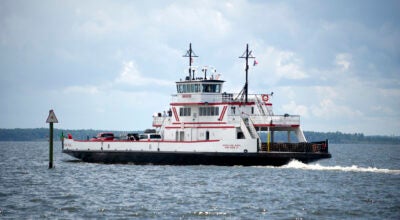Boat outing turns deadly
Published 6:23 pm Monday, October 1, 2012
An outing on the Pamlico River ended tragically for a Winterville man Friday night.
According to Master Officer William Cain with the North Carolina Wildlife Resource Commission, James Langston, 61, fell off the front of a boat near the railroad trestle spanning the Pamlico, just east of the Washington waterfront. Cain said it’s unclear how the man fell overboard.
“At this time, we’re not sure,” Cain said. “They think there was some underlying medical issues that contributed to him falling overboard.”
Another man aboard the boat made an attempted rescue: first by throwing a rope in after Langston, then jumping in the water when Langston remained unresponsive, Cain explained.
It was only after the boat drifted to shore near Moss Landing that witnesses onshore, having heard the commotion in the river, alerted authorities.
“Someone on the shoreline got in the (abandoned) boat and went out into the water and got the second person out of the water,” Cain said.
While the local WRC officers (District 2) were not notified by their Raleigh telecommunicators, via the Washington Police Department’s telecommunicators, until two hours after the incident occurred, their office is responsible for the investigation, said Cain. Langston’s death happened in WRC jurisdiction —the Pamlico River.
“You just have to get up with the witnesses and get all the info you can,” said Cain. “Find the boat and make sure everything’s OK with the boat, (that it has) all the safety equipment.”
The recommended procedure when someone goes overboard is what Cain calls, “throw, reach, row and go.”
He describes this as, first, throwing any floatable device to the person in the water:
“Any type of life jacket, even a cooler — coolers float.”
U.S. Coast Guard regulations require that any vessel over 16 feet in length must have a Type 4 throwable device, such as boat cushions, ring buoys and horseshoe buoys on board.
The second step is to try to reach the person with either a paddle, or some other long device on hand. If that’s not a possibility, Cain said, a rescuer should maneuver the vessel to the person in the water by whatever means necessary: rowing, motoring, paddling. Finally, if that fails, he said, then “Go,” explaining not to “go in after them, but try to get some help. … The last thing you want to do is go in the water after them.”
Cain said that boating incidents like the one that occurred Friday night happen in the District 2 between one and four times a year.





